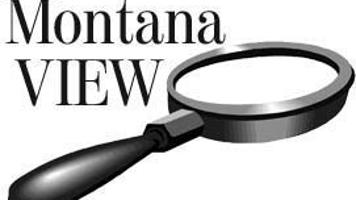
If only we could save all this extra flood water for a few more months and put it to use during the peak of the wildfire season.
Alas, the signs are already pointing to yet another hot, smoky summer, with the latest official outlooks predicting above-average potential for “significant” wildfires in the Northern Rockies region through August despite above-average rainfall this spring and below-average temperatures this past winter.
Budget-busting fires and smoke-choked air: unfortunately, it’s the new normal. What’s different this year is the way firefighting will be paid for at the federal level and the way Missoula plans to handle wildfires at the county level. And with these changes comes a good opportunity for those of us who live and breathe in the rural West to update our understanding of wildfires — how and where to prevent them, how and when to reduce the risk to property owners and firefighters, and when and where to let them burn.
Of course, the idea that any wildfire should be left unfought is anathema to some individuals, and for good reason. They are sick, often literally, of the smoke – and worried that an unchecked fire will become a runaway blaze that burns up both public and private property and winds up costing multiple millions of dollars.
Thus, the approach to firefighting has long been to put out every fire as quickly as possible. Last year, close to 98 percent of all wildfires were contained before they exceeded 10 acres. Yet the 2 percent or so that couldn’t be contained consumed the vast majority of resources, costing more than $2 billion and forcing the U.S. Forest Service to spend more than half of its budget on fighting fires. According to the incident commander assigned to last year’s Lolo Peak and Rice Ridge fires, each of those fires cost about $50 million to fight.
The record-breaking season prompted federal lawmakers to at last provide some relief to the U.S. Forest Service and put an end to the unsustainable practice of “borrowing” firefighting funds from the agency’s core budget. With rare bipartisan support, Congress approved the Wildfire Disaster Funding Act to provide $3.2 billion to the Forest Service for the purpose of fighting wildfires, and additional billions in future years.
In a guest column published in the Missoulian earlier this month, interim Forest Service Chief Vicki Christiansen noted that the funding infusion will allow the agency to complete more projects designed to prevent wildfires from starting in the first place. The Forest Service is in the process of drafting an explanation for senators on exactly how the money will be used. It’s clear those senators who voted in favor of the act expect at least some fire prevention to be accomplished through logging, as the legislation relaxes certain limitations on timber sales.
This expectation misses the forest for the trees, however; high-intensity wildfires burn through untreated, thinned and logged forests alike. And the reality is that some fires spark in places that are too difficult, dangerous or remote for firefighters to put out, and given limited resources, firefighting agencies must prioritize which wildfires to jump on and which to just watch. They must also take into account that putting out a fire may leave the forest even more at risk of an even more intense fire next season, while letting it burn virtually eliminates the likelihood of a catastrophic fire for decades.
Even more repugnant to some folks is the idea of intentionally setting fires via prescribed burns. Yet the available evidence points to this, along with complementary prevention methods, as a smart way to protect communities from wildfire. Instead of waiting for fires to start, and then burning up ever-increasing amounts of money trying to put them out, communities need to have a solid plan to protect against them.
Those plans must include prescribed burns. And because setting fires to prevent fires is such an unsettling idea, community education and input are essential to any community plan.
Missoula County has wisely taken pains to encourage public comment on the update to its Community Wildfire Protection Plan adopted in 2005. Unfortunately, it’s clear that a lot more education is needed.
The Missoula County Office of Emergency Management initiated the plan more than a decade ago in recognition of the growing risk of wildfire to property owners in the area known as the wildland-urban interface. It involves numerous stakeholders, from the federal managers of public lands to private homeowners who live in the forest, and spells out in detail where the wildfire risk is greatest, as well as how to mitigate that risk.
The update will identify new houses and roads in the wildand-urban interface, incorporate modern fuel reduction approaches and better mesh local projects with national strategies. It includes a map of the county’s wildland-urban interface and a map of the wildfire hazard assessment, as well as other useful information for any resident wondering what their local officials are doing about wildfires this year and for the foreseeable future, and how that fits with the prevention efforts on nearby national forests.
A final public hearing on the plan will take place Thursday, May 24, at 2 p.m. Missoula County’s commissioners should vote to approve it.
Prescribed burns in the mountains around Missoula over the past week caused a lot of grumbling among Missoulians who don’t want to lose a single clear day to wildfire smoke. But if this means keeping larger, hotter and more dangerous wildfires away from Missoula later this summer, it is well worth it. As irritating and inconvenient as it may seem, we simply have to start getting used to the reality of fighting fire with fire.
Bagikan Berita Ini














0 Response to "Montana view: Prescribed burns help protect against wildfires"
Post a Comment